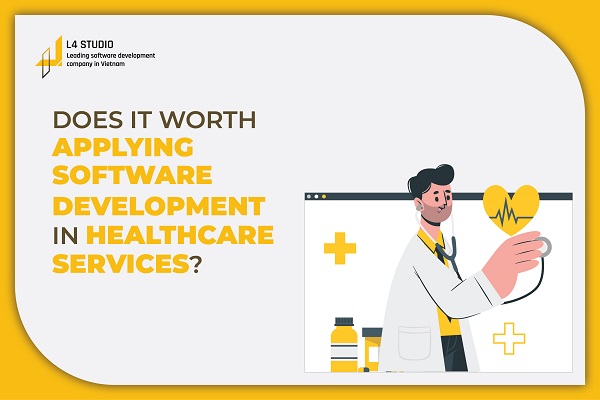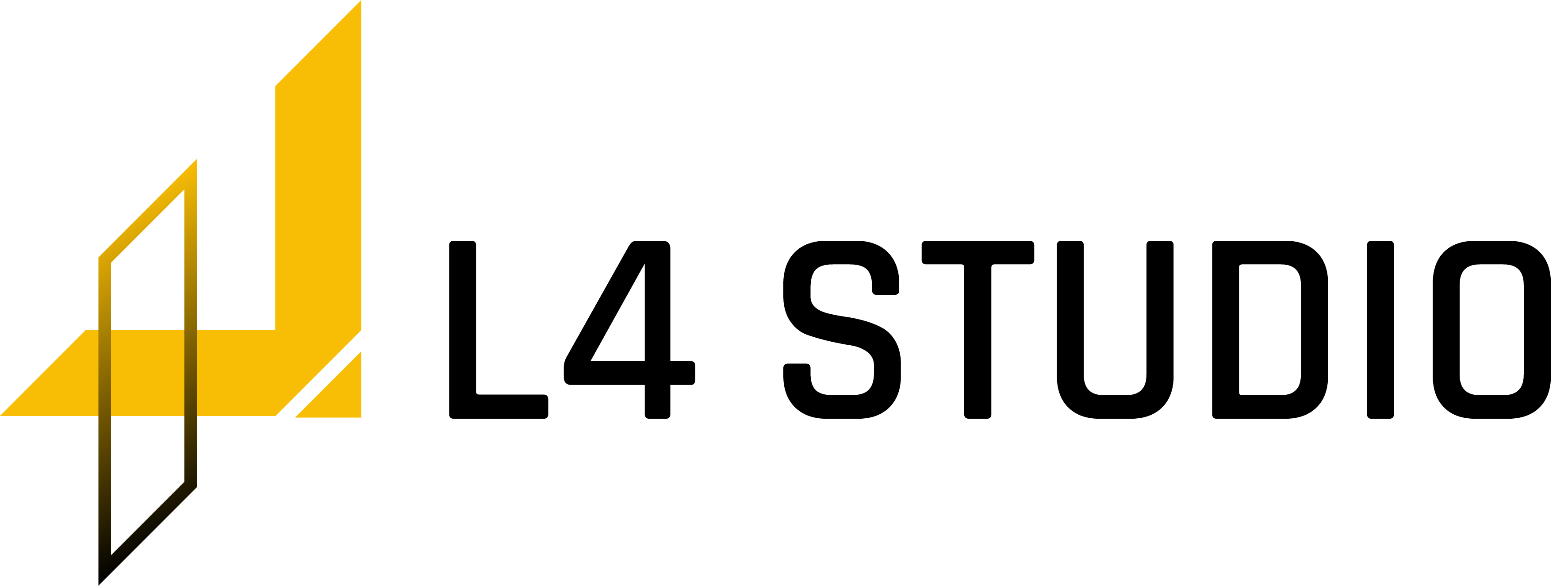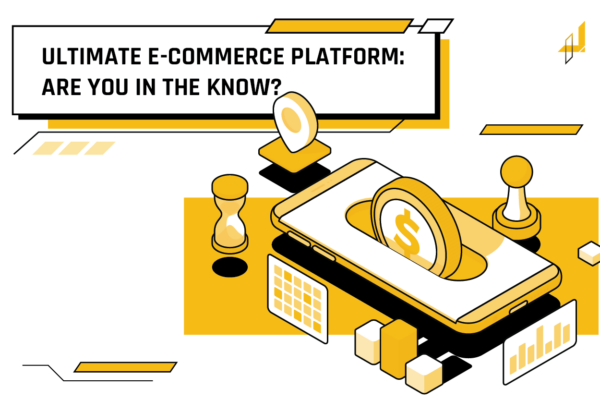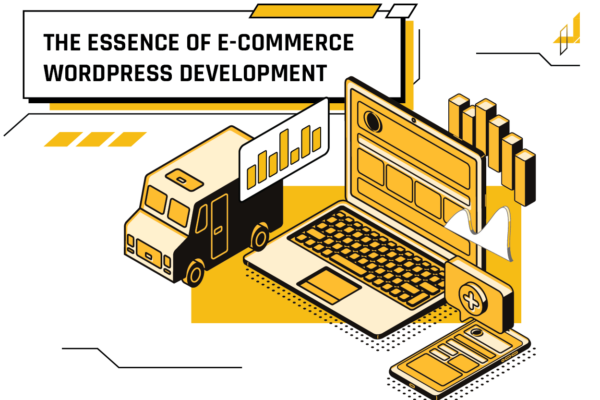
DOES IT WORTH APPLYING SOFTWARE DEVELOPMENT IN HEALTHCARE SERVICES?
Before COVID-19 wreaked havoc on the world, there was a need for all-encompassing healthcare software solutions, but now it’s essential. Hospitals and medical services have used technology to simplify diagnosis, treatment, and patient management in the weeks and months since the start of the pandemic. The effectiveness and game-changing potential of medical software development in healthcare has been demonstrated in this real-world testing situation.
In 2022, as technology has raised the bar for the sector as a whole, the adoption of software development in healthcare has continued to expand.
In this post, we go through the many benefits of applying software development in healthcare solutions, and the most recent trends in this field. We’ll examine situations in which choosing a personalized healthcare solution for your company is preferable to using a pre-made instrument.
1. BENEFITS OF SOFTWARE DEVELOPMENT IN HEALTHCARE
The healthcare enterprise software market is expected to exceed $8.2 billion by 2023, accounting for nearly a quarter of the $32 billion global healthcare information software industry. With such impressive figures, we must ask: what is the purpose of medical software?
Medical practice management software offers many benefits to users looking to accelerate their digital migration ambitions from transforming health management. That can drastically reduce the number of errors and mistakes that affect hospitals and practices. Here are a few of the most important:
1.1 YOUR PATIENTS WILL LIKELY BE MORE SATISFIED WITH YOUR SERVICES
Since there are so many alternative healthcare options available, a patient’s experience with your service is crucial. Customer satisfaction is a universal ingredient for success. To guarantee patient satisfaction, speed, and efficiency are essential. As a result, features like instant access to medical records and treatment histories have become crucial.

Figure 1. The satisfaction of the patient is a sign of your success
A seamless, quick process is made possible by tools provided by software development in healthcare, like automated scheduling, integrated communications channels, in-app messaging, and reminders, great ingredients for customer satisfaction.
1.2 BETTER MANAGEMENT OF THE HOSPITAL AND EQUIPMENT
The healthcare industry is continuously growing and evolving, with hospitals expanding and becoming more complex every year. As technology continues to advance, healthcare devices and equipment feature more advanced features and expensive parts, leading to a rise in the global market for medical equipment. In 2023, the global medical equipment market is anticipated to reach $603.5 billion, driven by the demand for more advanced and innovative healthcare devices. This demand is not just from developed countries but also from emerging economies where healthcare access is limited.
Additionally, there are some factors contributing to the growth of the medical equipment market. They can be an aging population, the rising incidence of chronic diseases, and the increasing number of surgeries. As a result, manufacturers are investing in research and development to produce more sophisticated, efficient, and effective medical devices that can improve patient outcomes while reducing the overall cost of care.
Specialized medical software is used by hospitals and healthcare organizations to manage operational costs and automate inventory stocking. They also ensure that essential equipment is well-maintained and cared for to effectively maintain and operate these expensive assets.
1.3 ABILITY TO MONITOR YOUR PATIENTS MORE EASILY
Wearable technology has revolutionized the way we use digital devices, and the healthcare industry has taken advantage of this by adopting software development in healthcare that enables doctors to examine, consult, and diagnose patients remotely. With the Internet of Things (IoT), wearable devices can transmit patient data in real-time to healthcare professionals, allowing them to monitor patients without leaving their practice. This technology has significant implications for patient care as it enables doctors to provide timely attention and make informed decisions. Wearable technology has also allowed patients to take an active role in their healthcare by monitoring their health status. Overall, the use of wearable technology in healthcare has improved patient outcomes and enabled healthcare professionals to provide high-quality care from remote locations.

Figure 2. With the advantage of IoT, hospital staff can monitor the biometric signs of patients everywhere
1.4 PAPERWORK IS NOT NECESSARY ANYMORE
Hospital administrators are weary of sorting through mountains of paperwork and no longer want to spend their time filling out endless paper forms.
These files can be digitized and accessed instantly, thanks to the advantage of software development in healthcare. Filling out paperwork electronically is not just more practical. Additionally, the likelihood of losing any documentation is reduced because it’s simpler to locate and consult any files.
Patients and medical professionals alike will soon be able to say goodbye to paper for everything from doctor scripts to reports and even sick notes.
1.5 CAN AVOID NUMEROUS HUMAN MISTAKES
Healthcare workers face immense pressure, whether it be from dealing with the COVID pandemic or long workdays. These pressures can increase the likelihood of errors, which can have severe consequences for patient outcomes. However, healthcare software has the potential to lower the risk of errors by automating repetitive tasks and providing accurate information. By automating these tasks, healthcare workers can focus on providing high-quality care to patients, reducing the likelihood of mistakes. Healthcare software’s designed to provide accurate up-to-date information to healthcare professionals, allowing them to make informed decisions about patient care. Adopting healthcare software can ease the burden on healthcare workers and enhance patient outcomes by reducing the chance of mistakes. Overall, it is a beneficial solution.
2. WHAT ARE THE CURRENT TRENDS OF SOFTWARE DEVELOPMENT IN HEALTHCARE?
As healthcare evolves, medical software is continuously updated to meet the needs of practitioners and administrators. The healthcare industry is facing new challenges. As new treatments and technologies are developed, the demand for efficient and streamlined access to healthcare services increases. Patients are calling for better access to more efficient services, and healthcare organizations adopting software solutions must consider these trends. Healthcare software providers must innovate and enhance their offerings to remain competitive and adapt to healthcare industry changes. To meet evolving needs, continuous improvement is essential. Healthcare organizations can enhance patient service and competitiveness by using software solutions that simplify processes and increase access to care. Such solutions aid organizations in remaining competitive in the dynamic healthcare market.
2.1 AR/VR IN REHABILITATION AND MENTAL HEALTH CARE
Virtual reality (VR) and augmented reality (AR) technology are no longer just for video games. The fascinating technology of recent healthcare software development has proven its versatility and applicability to several industries, including healthcare. It has showcased numerous benefits and opportunities in healthcare.

Figure 3. AR technologies can now have a variety of benefits for surgery
In 2017, a group of surgeons worldwide completed the first mixed-reality surgical procedure after decades of developing this software. The accessibility of AR and VR technology has improved, creating more opportunities for their use in various fields, such as physiotherapy and psychological treatment. In recent times, technology has seen advancement in its capabilities.
2.2 HEALTHCARE DATA SECURITY AND COMPLIANCE WITH BLOCKCHAIN TECHNOLOGY
The use of blockchain technology provides a secure and cost-effective method for data management and exchange while also addressing privacy and security concerns. It meets most regulatory compliance requirements and is a promising solution to pressing global issues. This sector can save up to $100 billion annually in security infrastructure costs through the use of blockchain by 2025. This technology has the potential to revolutionize software development in healthcare, transforming the sector.
As a healthcare application, blockchain is ideal for providing digital infrastructure and security that complies with the majority of public healthcare sector standards. It is a perfect solution for meeting compliance requirements in the healthcare industry. Data is encrypted with uncrackable keys that can only be accessed by authorized users at all times and locations. These advantages go far beyond just enhancing patient satisfaction, and blockchains may also help with insurance claims, business contracts, and automatic contract renewals.
2.3 DIGITAL TREATMENTS AND MEDICATIONS
Digital health solutions have led to greater patient control over treatment regimens with the introduction of healthcare digitization. The healthcare industry’s widespread acceptance of this trend has facilitated better patient outcomes. Software development in healthcare encompasses digital health solutions that leverage software to enhance care delivery and provide evidence-based treatment. These solutions cover various aspects of healthcare service delivery. The trend towards digital health solutions has seen a significant increase since the onset of the COVID-19 pandemic, with a focus on reducing healthcare costs while still maintaining the highest level of care. Digital tools and platforms enable patients to play a more active role in their care by tracking health metrics and communicating with healthcare providers. The introduction of these tools has empowered patients in their healthcare journey. By leveraging digital health solutions, healthcare providers can improve patient outcomes, reduce costs, and provide better care overall.
2.4 THE ADVANCE IN VIRTUAL CARE
Telehealth (known as virtual care), remote patient monitoring, and virtual healthcare options all have advantages for both patients and doctors. Due to efforts to deliver the least expensive care in the most efficient setting possible, virtual care has grown in popularity. The regulation of these tools and reimbursement initiatives is another justification.
Mobility is influencing software development in healthcare demand more and more, just like it does with everything else in our lives. Patients desire the same level of accessibility to healthcare that they enjoy for other aspects of their daily lives. On-demand care and connected devices will continue to gain popularity even though some providers may not have embraced this more recent trend.
2.5 EMBRACE PATIENTS ENGAGEMENT
Patients are beginning to see themselves as healthcare consumers more recently. They want online payment and appointment management, immediate results, and direct access to their doctors from technology like patient-care portals.
As smartphone usage continues to grow in popularity, it is not only transforming healthcare but also education. With the integration of software development in healthcare, healthcare professionals can now have real-time access to medical information and patient records via mobile devices. This technology is also impacting the education and training of healthcare professionals, allowing students to gain hands-on experience with the latest technology they will encounter in their future careers. The use of patient-care portals and digital health solutions, enabled by software development, is equipping healthcare professionals with the necessary skills to provide patients with the best possible care and empowering patients to take control of their healthcare.
2.6 IMPLEMENT WEARABLE TECHNOLOGIES
The distinction between consumer health wearables and medical devices is becoming hazier. The explosive growth in demand for wearable gadgets like Fitbits is related to mobile devices. According to various projections, the market value of wearable medical devices is expected to range from $30 to 90 billion by the year 2025.

Figure 4. Wearable technologies help doctors diagnose patients more easily
Wearable devices’ security risks and privacy concerns arise when data is transferred insecurely over networks or stored in third-party databases. While wearables offer numerous benefits, it’s crucial to address these risks to ensure that patients’ security is not compromised.
The data collection process for clinics and hospitals is being streamlined by wearable technology. Currently, textile-based, flexible, and epidermal wearables are used to track patients’ clinical conditions, such as cancer, mental illness, and blood sugar levels. These gadgets are now among the most widely used healthcare technology trends.
2.7 DATA EXPLORATION
Systems need to be able to securely store the growing amount of data. One of the biggest developments in health IT, in Nosta’s opinion, is blockchain technology. This makes it possible to store more digital data while using much less storage space. Blockchain can also give users new levels of data control, giving them more direct and effective access to their information.
With the introduction of value-based care, predictive analytics, and AI, the demand for healthcare data will only rise. The potential of using AI to analyze data gathered through various electronic records systems is beginning to dawn on providers. The ultimate goal is to assist doctors in making decisions, lowering financial risk, managing chronic illnesses, and more.
CONCLUSION
Software development in healthcare is constantly evolving to meet the needs of healthcare organizations and providers. These trends have helped create more opportunities to approach healthcare security in a more holistic manner while also raising the level of security, even though they may raise some concerns about security and patient privacy. Better data management techniques will be the end result of our efforts to enhance patient outcomes and reduce healthcare costs.
Source: Internet
——————————
L4 STUDIO – LEADING SOFTWARE DEVELOPMENT COMPANY IN VIETNAM
Website: https://l4studio.net/
Email: hi@l4studio.net
Phone: (+84) 28 6675 6685
Our Mobile App Development Services: https://l4studio.net/mobile-app-development/
For more exciting blogs: https://l4studio.net/it-knowledge/
Follow us at: https://www.facebook.com/L4Studiovn/
Read more: THE TOP 10 BENEFITS OF MEDICAL SOFTWARE DEVELOPMENT SERVICES








